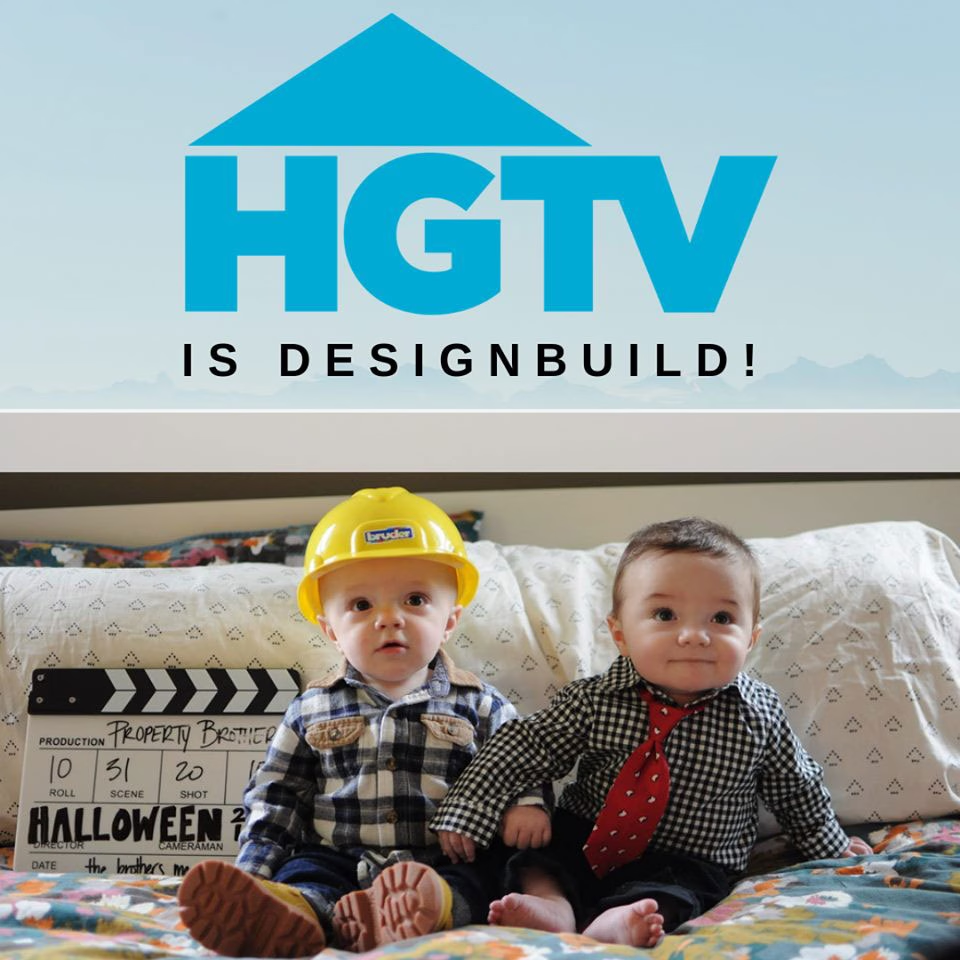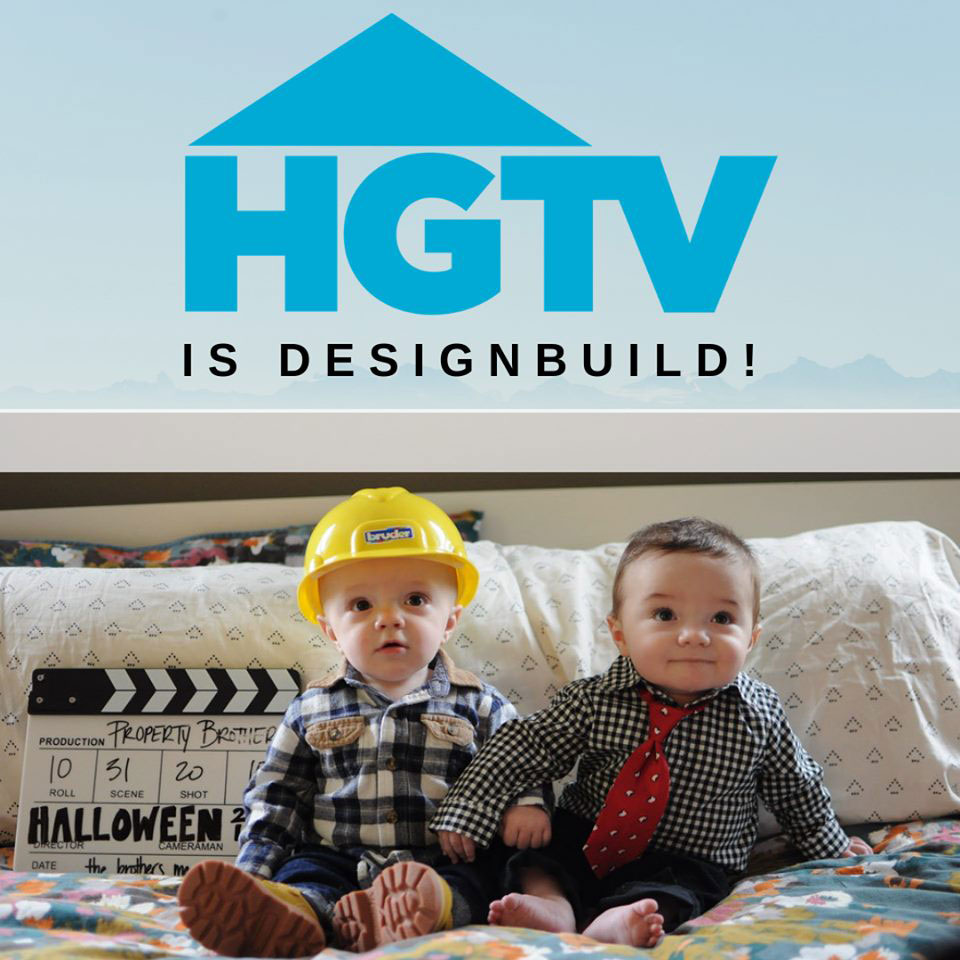HGTV = Design-Build


Photo Credit: Emily May on Flickr (CC BY 2.0)
HGTV is an American cable television channel owned by Discovery Inc. The network’s content focuses primarily on real estate and home improvement reality programs, reaching a vast majority of the country. Over 95,000,000 households in the US receive HGTV (over 80% of households). That’s a lot of homes and a lot of people and families tuning in.
As a note, in 2016 HGTV took over CNN and became the third most-watched cable network in the US. That’s pretty impressive, frankly. (Fox News and ESPN took the number 1 and 2 spots). So that’s a lot of eyeballs and attention.
Three of the most popular shows on HGTV are:
• Fixer Upper.
This ran for 5 seasons and was hosted by Chip and Joanna Gaines in Waco, Texas. Personable, charming, and focused on families.
• Flip or Flop.
This ran for 7 seasons and 92 episodes, hosted by Tarek and Christina El Moussa.
• Property Brothers.
Two-twin brothers Johnathan and Drew Scott. Charming, funny and competent the brothers have made Design-Build a family affair. The show has been rolling for 136 episodes and counting since 2011.
I find my interest immediately caught up in the human element of the content — particularly of the show Fixer Upper. While the programming is technically and fundamentally on buildings — homes and how to purchase and renovate them — the focus is actually on people.
Families, parents, children — their current living situations and how a newly purchased and renovated home will affect their lives and futures.
The hosts Chip and Joannie are personable, and you can feel the emotions and hope in the families they focus on. The human element grabs and carries one’s attention. The emotional crescendo at the end where the newly renovated home is unveiled is clearly the high-point. It’s kind of addicting.
But what I found interesting was two-fold:
1. The common thread of how greatly a properly renovated new home will impact the future of a family — giving each member the proper space and facilities to interact while pursuing their hopes, dreams, and goals.
2. The HGTV show Fixer Upper and the majority of HGTV’s content is entirely Design-Build.
The fact that the show is entirely Design-Build is evident but may escape many viewers as its not particularly emphasized or pointed out. Yet this is a vital point.
The actual sequence, while entirely abbreviated for entertainment and cinematic purposes, is vividly clear:
A. An aesthetic goal is conceptually established with the owners to create a beautiful and productive space which will enhance and push forward their lives.
B. The design and planning is done to align with this vision and goal — and the renovations are then carried out.
The cycle is not fragmented or tossed from architect to multiple builders — neither having a true regard or full ownership for the quality of the finished project… or the initial budget. (I’m not going to comment or particularly get into my opinion on HGTV’s design and renovation budgeting as depicted in their content Let’s just say it seems clearly adjusted for the entertainment value of the production and I’ll leave it at that. This aspect isn’t the point of my communication here.)
HGTV actually does a great job in showcasing the Design-Build approach to home renovations and its fundamental truth and simplicity. While it’s a show and costs are fictional, HGTV is laying the groundwork and softening the public for the blow of this increasingly fundamental and popular approach to building and renovation. 95,000,000 US households are being trained in the natural collaboration in which projects should be executed as the correct way. Design-Build is accepted naturally because it is natural. Expectations when working with a professional will change as a result – especially as they become aware of Design-Build.
In my upcoming book, I discuss practical Design-Build and passionately believe in the Design-Build process I continuously advocate for — as a Design-Builder I can deliver what I promise. I did not write this book from an ivory tower (another world, or seclusion) or to pose an interesting philosophy to think about. I write from a practical, on-the-ground perspective — with the purpose of the principles being applied to help others. Real people.
It’s interesting to me that these HGTV shows are Design-Build and clearly show that good design is still what building owners want, and a designer who can also guarantee the cost, quality, and schedule can dominate the market.
Go step outside. There are a lot of new buildings out there and some that are being built right now. Buildings have never stopped being built. So Design-Build does not need to emerge anew for there to be buildings. But our culture has established that there is a best way to do something. A standard that works and endures, with an inherent truth to it.
The first time I did a non-90-degree-cut on a miter saw I tried and erred through about a dozen cuts until I got a joint that could be caulked well enough to not stick out like a sore thumb. This was not the most efficient or effective way to do that. That best way can lead to efficiencies which save time and money and lead to a better product. We could see with candlelight but having electricity is much more efficient.
In home building and remodeling the most efficient process is Design-Build.
One can focus on a specific aspect of this profession or be the quintessential Design-Builder. Whichever you endeavor or engage, I recommend you ensure it is under the wing of complete planning with its execution and the end product in mind.
Follow HGTV’s suggestion and seek and use Design-Build for quality, economy, efficiency and ultimately — happiness.
